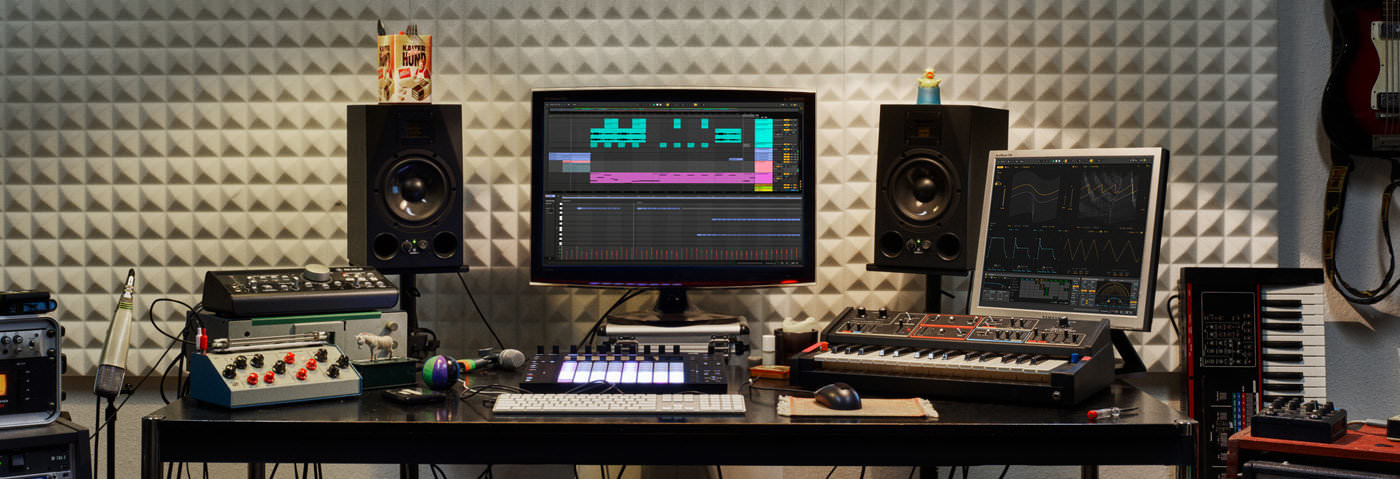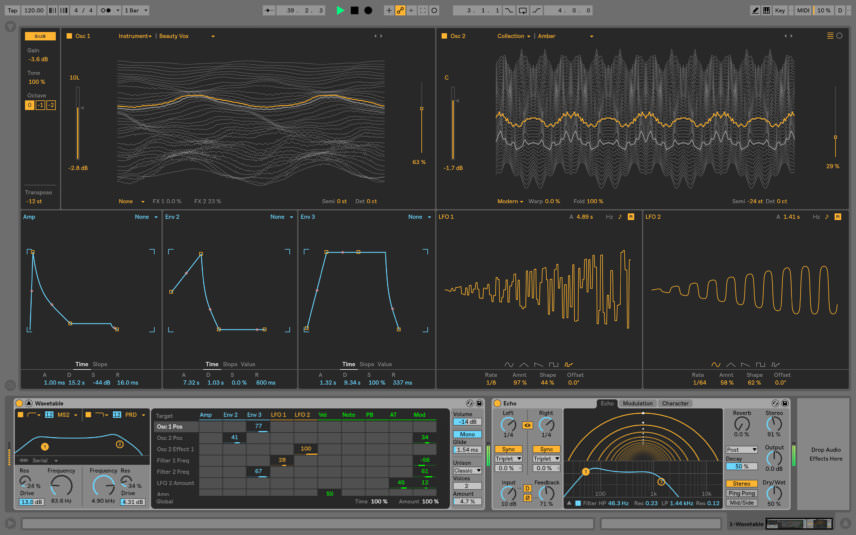Ableton Live 10 is here. Greg Scarth takes a look at the best new features in the update.
It’s hard to believe the last major Ableton update was nearly five years ago. That’s partly because five years is a lifetime for any major music software to go between updates – to put it into perspective, Propellerhead Reason was only on version 6 when Live 9 came out, and Reason 10 was released last month – but more importantly it’s because Live has been so heavily upgraded over the last five years that it feels like a lot has changed since version 9 arrived.
The distinction is important: Ableton refer to those previous releases (9.1 through 9.7) as ‘upgrades’ rather than updates. Live 10, which will be released in the first quarter of 2018, is a much more significant overhaul of the software.
We’ve been putting some of the best parts of the new version to the test in a pre-release version of the software. Join us for a run through the biggest new features, including overall workflow improvements and some exciting new devices.
Workflow
When is the big new feature not a big new feature? When it’s a bunch of little ones.
The biggest change in Ableton 10 is hard to explain, because in isolation many of the changes could almost seem inconsequential. Taken in isolation, something like the ability to edit multiple MIDI clips simultaneously probably isn’t the kind of feature that gets the pulse racing, but it’s the combination of numerous similar changes that makes the overall workflow better: there’s a new Capture feature (similar to Logic’s Capture Record) which records MIDI even before you hit the record button, so you don’t lose good ideas as you jam; the long-awaited arrival of groups within groups; a more customisable browser to make it easier to sort and navigate; Max for Live is also now fully integrated, which makes for a smoother workflow.
All in all, Live 10 feels quicker, easier and more intuitive to use than Live 9. It’s also nicer to look at, thanks to a subtle but extensive visual overhaul including the introduction of Ableton’s own custom font throughout.
Wavetable
Named in typically no-nonsense Ableton style, Wavetable is an all-new wavetable synth, designed in house. It’s notably complex by the standards of most Ableton synth devices, offering a much-welcome addition to the old standards like Operator and Analog. Most importantly it sounds great. The range of wavetables on offer is impressively deep, with the Classic selection including waves sampled from iconic synths like the Roland Juno-6, Oberheim OB-6 and Minimoog.
What’s also interesting here is that Wavetable has been designed from the ground up with Push 2 in mind. The second-generation Push controller’s high-res TFT displays have been under-utilised previously but Wavetable really takes advantage of them, as do the updated versions of EQ Eight and Compressor. This is one of a number of areas where Live 10 has been designed to draw more out of Push, including a new step sequencing layout and note displays.
Echo
The most exciting new effect device is surely Echo, another very understated name for a powerful processor. Echo isn’t modelled on any one specific piece of gear, choosing instead to combine features and sonic signatures of various analogue and digital approaches. It’s neither strictly delay nor reverb, but a combination of both and, much like Wavetable, there’s a hell of a lot to get to grips with here. The delay section on the left is fairly straightforward, as is the reverb on the right, but the central pane is where the interesting stuff goes on, switching between Echo, Modulation and Character modes views to offer impressively deep control of the effect.
The presets offer the best starting point to understand the sonic potential on offer, with ‘Tape Reverb Space’ doing a fairly convincing Roland Space Echo impersonation and ‘Ethereal Canyon’ at the other end of the scale, doing gorgeous looooooooong reverb.
Echo is a serious addition to Live’s effect roster, sitting alongside devices like Reverb and Ping Pong Delay to create a much more rounded set of ambience effects.
Drum Buss
With settings like ‘Drum Sharpener’, ‘Punchy Driven’ and ‘Transient Shaping Enhance’, it’s pretty obvious what the appeal of Drum Buss is going to be: a preset-driven drum processor that gives instant results.
If that makes it sound like it’s just a selection of presets, that’s only really half the story. Under its skin, Drum Buss clearly packs a lot of clever processing power, with compression, transient shaping and saturation all combined to very good effect. The controls are simplified to Drive, Crunch and Boom with just a handful of other parameters to adjust, but this makes it quite intuitive to get to grips with the potential.
Surprisingly, I also found that Drum Buss could do quite interesting things to some monophonic synth parts, particularly basslines and anything with a prominent attack transient. There’s also an option to dial in the key of the track so that the processing stays in tune with the musical elements of your project.
Pedal
Most other DAWs offer some form of stompbox-style effects and Ableton join the party this time round with Pedal, a new device offering three modes of distortion (overdrive, fuzz and a generic ‘distort’ setting). It sounds good, but it’s very much a bare-bones effect, with very little in the way of control other than a gain control and three-band EQ. Although you can’t really criticise a distortion effect for only doing distortion, perhaps this is one area where Ableton missed a trick? Going just a little bit further with the stompbox concept and including, say, a dirty lo-fi flanger and a bucket brigade-style chorus would have made it feel a bit more complete. Similar effects are available elsewhere in Live, of course, but Pedal feels a little bit basic. It’s certainly the least exciting of the new devices, but still a useful addition.
Ableton Live 10 will be available in the first quarter of 2018, priced from €79/$99/£69 for Live Lite all the way through to €599/$749/£539 for the full Live Suite.



11.22 PM
Awesome!
02.26 AM
Bitwig better tho